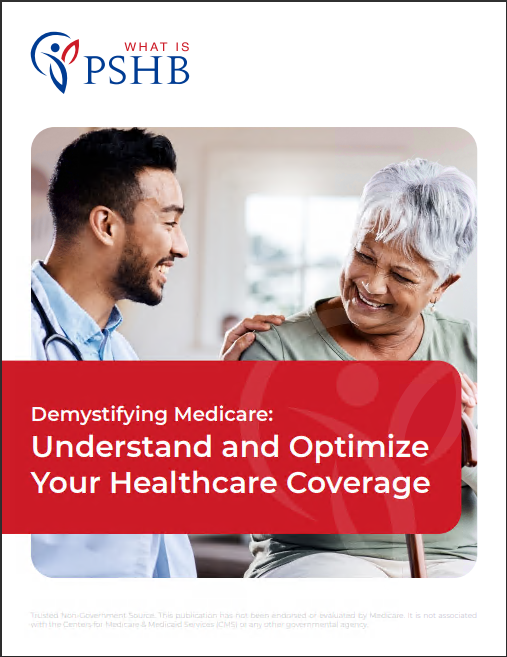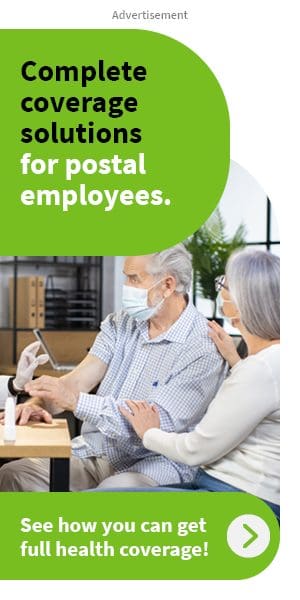Key Takeaways
-
In 2025, your FEHB coverage no longer applies if you’re a USPS employee or retiree. You must now be enrolled in a Postal Service Health Benefits (PSHB) plan to maintain health insurance.
-
While much of the structure resembles FEHB, there are important differences in enrollment requirements, Medicare coordination, and prescription drug integration that you need to be aware of.
What PSHB Means for You in 2025
If you’re a United States Postal Service employee or retiree, your familiar Federal Employees Health Benefits (FEHB) plan has officially transitioned to the Postal Service Health Benefits (PSHB) Program as of January 1, 2025. This change, directed by the Postal Service Reform Act of 2022, creates a separate health benefits program just for USPS workers and retirees.
For most people, this change has gone smoothly with automatic enrollment. But it’s essential to understand what this means for your health coverage going forward—and what decisions you still need to make to avoid potential disruptions.
Understanding Automatic Enrollment
If you were already enrolled in an FEHB plan in 2024, you were automatically transitioned into a corresponding PSHB plan on January 1, 2025. Here’s how it worked:
-
You didn’t need to take action during the transition unless you wanted to select a different PSHB plan.
-
Your dependents who were previously covered under FEHB continued to receive coverage if eligible.
-
Your premiums were adjusted according to the PSHB rates, but the federal government still pays about 70% of the total premium cost.
However, not everything about the switch was automatic. There are specific areas—particularly around Medicare and prescription drug coverage—where action may still be needed.
Enrollment Timeline You Should Know
-
April 1 – September 30, 2024: Special Enrollment Period (SEP) for enrolling in Medicare Part B without penalty if you became newly eligible due to the PSHB transition.
-
November to December 2024: Open Season window to review and select a PSHB plan.
-
January 1, 2025: Coverage under PSHB officially began.
If you missed the Special Enrollment Period and are required to have Medicare Part B for PSHB eligibility, you may be subject to late enrollment penalties and may have limited access to drug coverage.
Who Must Enroll in Medicare Part B
One of the most significant changes under the PSHB Program is the requirement to enroll in Medicare Part B for certain retirees and family members. As of 2025, the following groups must be enrolled in Part B to remain eligible for full PSHB benefits:
-
You’re a USPS annuitant who is entitled to Medicare Part A.
-
You’re a family member of an annuitant who is also entitled to Medicare Part A.
Exceptions to the Part B Requirement
You are exempt from the Medicare Part B requirement if:
-
You retired on or before January 1, 2025, and are not currently enrolled in Part B.
-
You were at least age 64 as of January 1, 2025.
-
You live outside the United States.
-
You receive health coverage from the Department of Veterans Affairs or the Indian Health Service.
If you meet any of these exceptions, you are allowed to stay in PSHB without enrolling in Part B. Otherwise, failure to enroll in Medicare Part B could result in losing access to your plan’s prescription drug benefits.
Prescription Drug Coverage Under PSHB
In 2025, prescription drug benefits for Medicare-eligible retirees and their covered family members are delivered through a Medicare Part D Employer Group Waiver Plan (EGWP), integrated into the PSHB plan. Here’s what this means:
-
You’ll receive automatic enrollment into the Part D EGWP if you are enrolled in Medicare Part A and Part B.
-
Your drug coverage is enhanced, with benefits such as:
-
A $2,000 annual out-of-pocket cap on covered prescriptions.
-
A $35 monthly cap on insulin.
-
Access to an expanded pharmacy network.
-
If you do not enroll in Medicare Part B, you cannot be automatically enrolled into the Part D EGWP, and you lose drug coverage under PSHB.
How Costs Have Changed in 2025
While the PSHB structure remains familiar, you may notice changes in cost-sharing:
-
Premiums: Remain partially subsidized by the government—about 70% of total cost.
-
Deductibles: In-network deductibles range from $350 to $500 for Self Only plans, and higher for Self Plus One or Self & Family.
-
Copayments: Office visits typically range from $20 to $60 depending on provider type.
-
Coinsurance: Varies from 10% to 30% for in-network services and up to 50% for out-of-network care.
These changes mean that while you still receive strong benefits, you’ll want to review your plan annually during Open Season to ensure you’re getting the best value for your needs.
What About Your FEDVIP and Other Benefits?
The PSHB Program affects only your medical health plan. Other federal benefits like dental, vision, and life insurance remain under their original systems:
-
FEDVIP (Dental and Vision): Still available to USPS retirees and employees. You may continue enrollment or make changes during Open Season.
-
FEGLI (Life Insurance): No change. Coverage continues unaffected by the PSHB transition.
-
Flexible Spending Accounts (FSAFEDS): Remain available for active USPS employees but not retirees.
How to Make Changes to Your Plan
You can make changes to your PSHB plan only during specific times or due to qualifying life events (QLEs):
-
Open Season (November to December each year): Review, compare, and change plans.
-
Qualifying Life Events: Include marriage, divorce, birth, death, or loss of other coverage.
Plan brochures are available for review on the OPM website and through your USPS HR portals like LiteBlue (for employees) or KeepingPosted.org (for retirees).
Staying Informed About PSHB
Staying current with your benefits ensures you make informed choices. Here’s how you can stay up to date:
-
Check your mail: Look for communications from OPM and USPS during Open Season.
-
Visit official websites: Such as OPM.gov or KeepingPosted.org.
-
Contact PSHB Navigator Help Line: For questions about eligibility, enrollment, or Medicare coordination.
Making Sense of It All
This change to the PSHB Program is one of the most significant shifts in recent years for USPS health benefits. If you’re currently covered, your plan didn’t vanish—it simply moved to a new program built specifically for the Postal Service.
You may not need to do much if you were auto-enrolled and already have Medicare Part A and B. But if you fall into the group required to enroll in Medicare Part B and haven’t done so, or if you want to switch your plan during Open Season, then action is required to maintain full benefits.
Speak with a licensed agent listed on this website to receive personalized help and ensure your coverage aligns with your health needs in 2025 and beyond.







